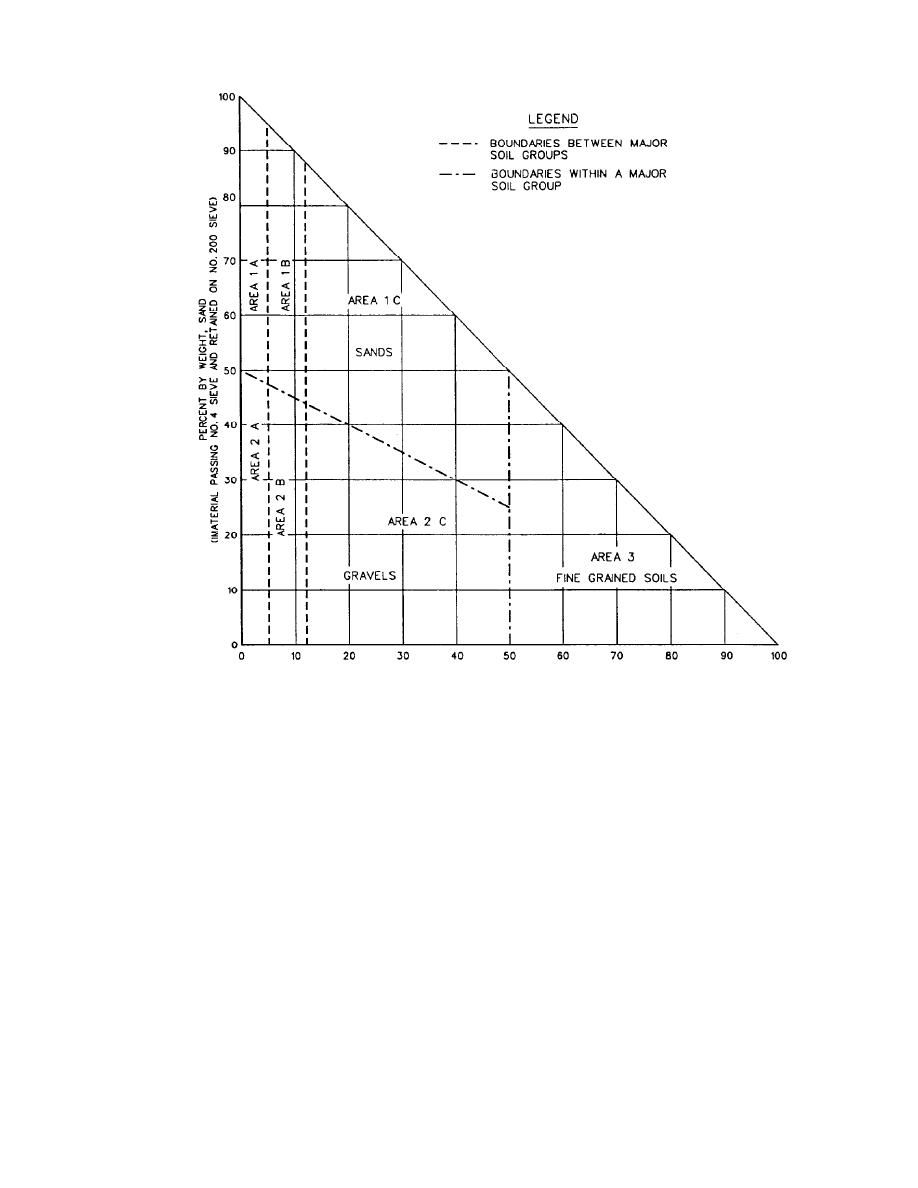
TM
5-822-14/AFJMAN
32-1019
PERCENT BY WEIGHT, FINES
(MATERAIL PASSING NO. 200 SIEVE)
Figure 2-1.
Gradation triangle for aid in selecting a commercial stabilizing agent.
b. Limitations. In frost areas, stabilized soil is
lization indicate that the PI must not exceed 25,
only used in one of the upper elements of a
thus LCF is also a candidate stabilizing material.
pavement system if cost is justified by the reduced
At this point, the designer must make the final
pavement thickness. Treatment with a lower de-
selection based on other factors such as availabil-
gree of additive than that indicated for stabiliza-
ity of material, economics, etc. Once the type of
tion (i.e., soil modification) should be used in frost
stabilizing agent to be used is determined, samples
areas only with caution and after intensive tests,
must be prepared and tested in the laboratory to
because weakly cemented material usually has
develop a design mix meeting minimum engineer-
less capacity to endure repeated freezing and
ing criteria for field stabilization.
thawing than has firmly cemented material. A
2-2. Use of stabilized soils in Frost Areas.
possible exception is modification of a soil that will
a. Frost considerations. While bituminous, port-
be encapsulated within an impervious envelope as
land cement, lime, and LCF stabilization are the
part of a membrane-encapsulated-soil-layer pave-
most common additives other stabilizers may be
ment system. A soil that is unsuitable for encapsu-
used for pavement construction in areas of frost
lation due to excessive moisture migration and
design but only with approval obtained from the
thaw weakening may be made suitable for such
use by moderate amounts of a stabilizing additive.
HQUSACE (CEMP-ET), Washington, DC 20314-
Materials that are modified should also be tested
1000 or the appropriate Air Force Major Com-
to ascertain that the desired improvement is dura-
mand.
2-2


 Previous Page
Previous Page
